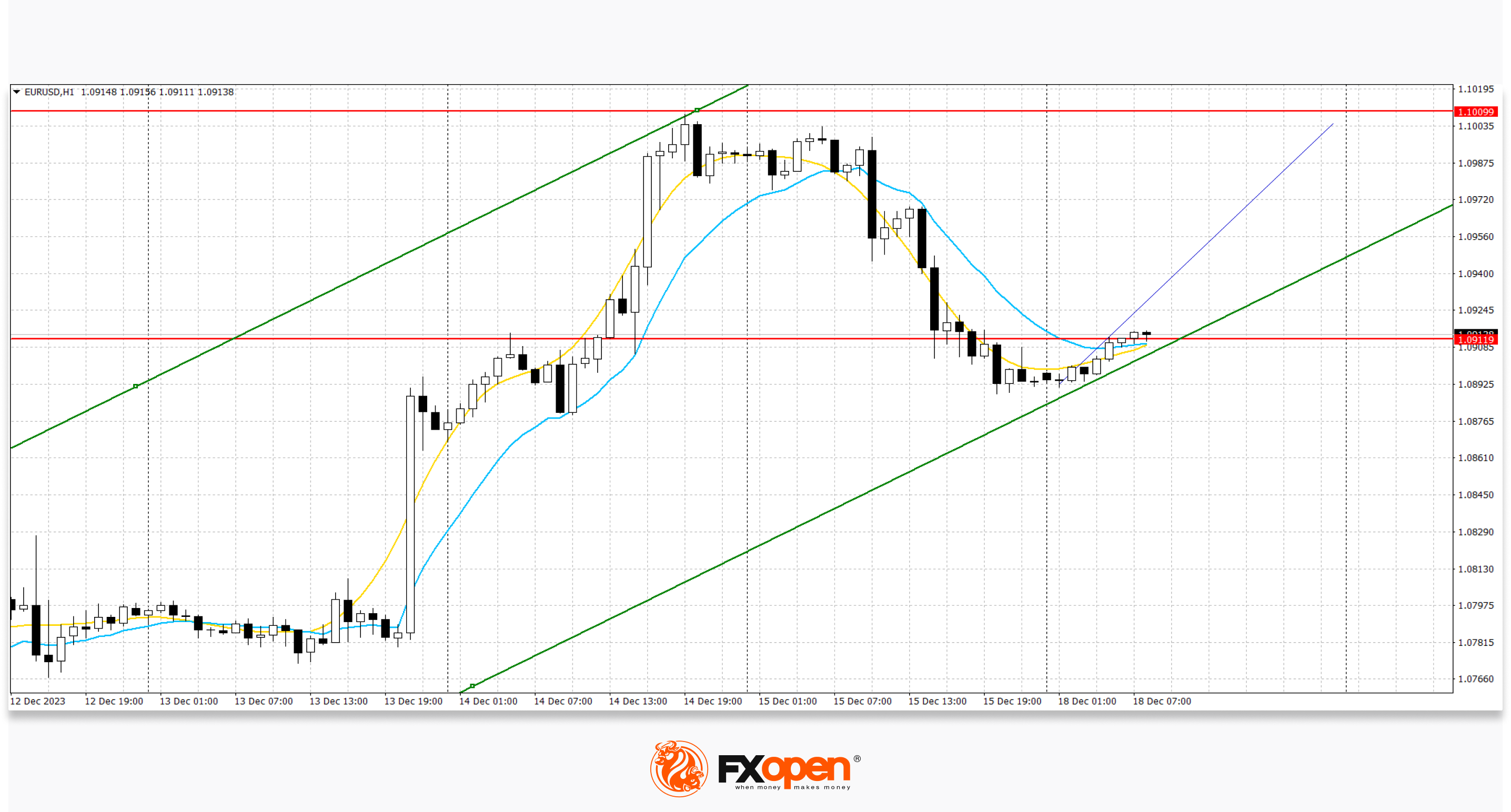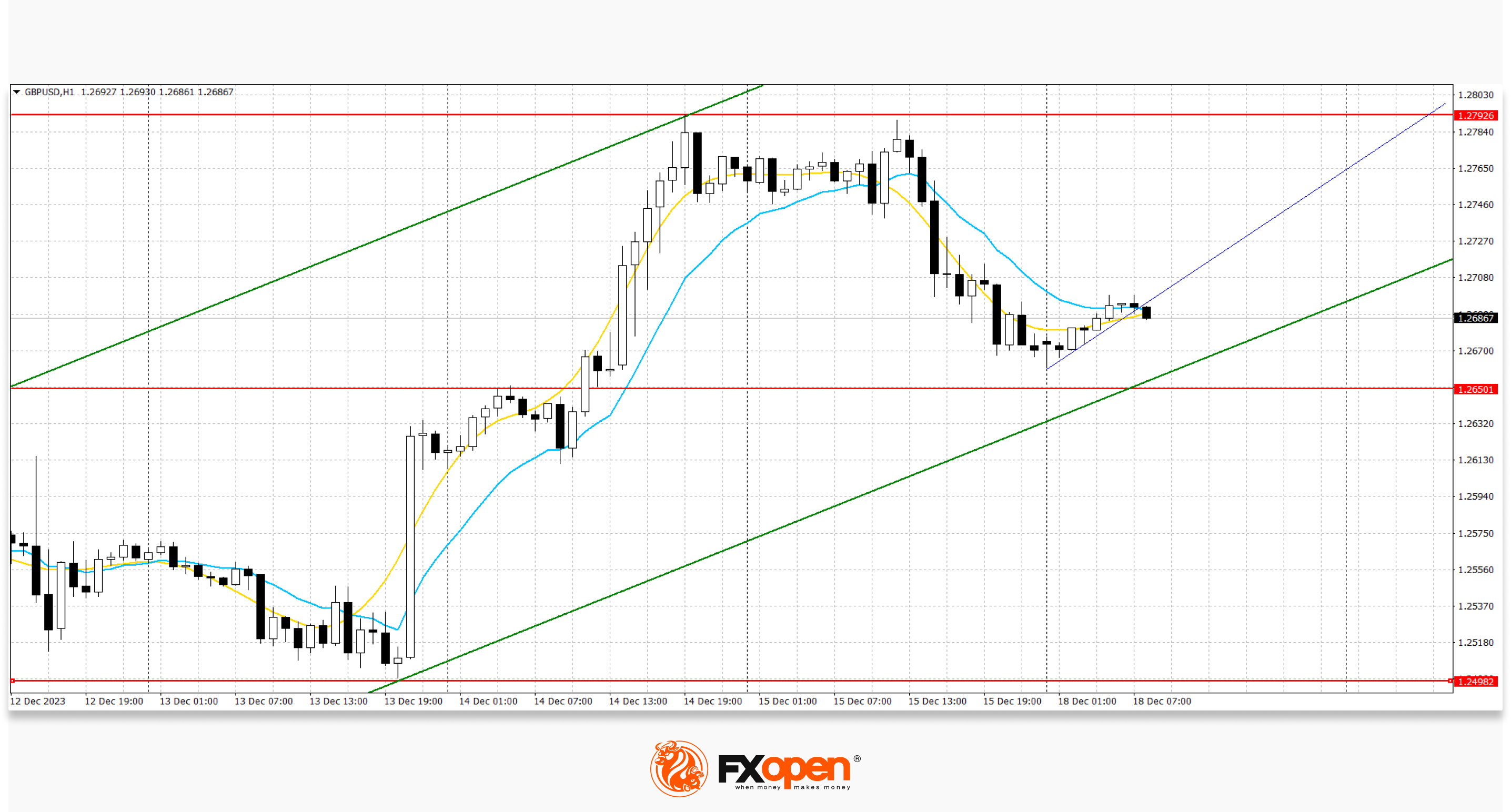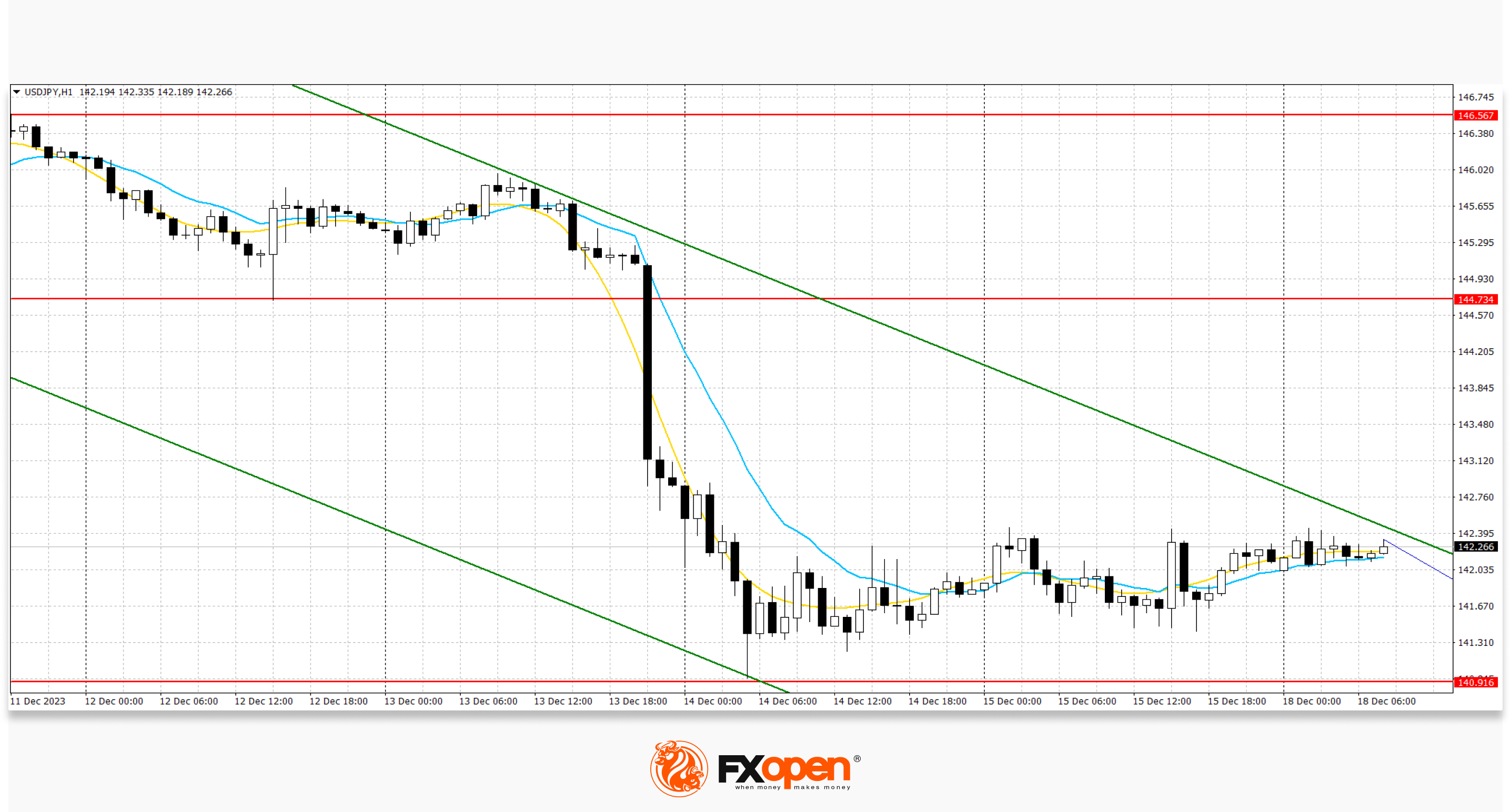FXOpen

The dollar rose on Friday after Fed spokesman Williams tempered expectations for a rate cut and reiterated that the central bank remains focused on bringing inflation down to its 2% target. Williams was the first Fed official to speak since a policy meeting last week in which the central bank left its benchmark overnight interest rate unchanged at a range of 5.25%-5.50%. With rates stable, the big shift in the Fed's outlook was due to the possibility of monetary easing next year. Economic data released Friday signalled a pick-up in US business activity but also showed the manufacturing sector continues to struggle.
EUR/USD
According to the EUR/USD technical analysis, the pair is consolidating around the 1.0900 level. Immediate resistance can be seen at 1.1023, and a break higher could trigger a rise towards 1.1065. On the downside, immediate support is seen at 1.0896, a break below could take the pair towards 1.0855.
The euro weakened against the dollar on Friday after the euro zone's contraction in business activity unexpectedly deepened in December. The eurozone's preliminary HCOB manufacturing PMI remained stable at 44.2, missing market expectations of 44.6. Although eurozone manufacturing indicators remained stable, they fell below expected levels. Business activity in Germany, Europe's largest economy, contracted in December, raising concerns about the increased likelihood of a recession by the end of the year. In France, the decline accelerated faster than expected, driven by further deterioration in demand for goods and services in the eurozone's second-largest economy.

The previous ascending channel remains. Now, the price has moved away from the lower boundary and may continue to rise.
GBP/USD
On the GBP/USD chart, the pair is showing corrective growth after falling on Friday. Immediate resistance can be seen at 1.2791, and a break higher could trigger a rise towards 1.2890. On the downside, immediate support is seen at 1.2657, a break below could take the pair towards 1.2629.
In November, the UK manufacturing business activity index fell from 47.2 points to 46.4 points, but the service sector indicator rose from 50.9 points to 52.7 points, significantly exceeding the expected 51.0 points, which led to a correction composite value from 50.7 points to 51.7 points compared to forecasts of 50.9 points. Positive dynamics persist despite high inflation and Bank of England interest rates, signalling a significant reduction in the risk of a recession in the country's economy.

The previous ascending channel remains. Now, the price is near the lower border and may continue to rise.
USD/JPY
The USD/JPY pair is holding at 142.26, trying to develop corrective momentum. Strong resistance can be seen at 142.32, and a break higher could trigger a rise towards 143.88. On the downside, immediate support is seen at 141.02. A break below could take the pair towards 140.31.
Last week, the pair showed a steady decline, which was the market’s reaction to the easing of the US Federal Reserve’s stance on monetary policy. In turn, the Bank of Japan once again demonstrated its readiness to abandon the long cycle of negative interest rates in the event of increased inflationary pressure in the country. It is likely that if the correction of borrowing costs by the American and Japanese regulators coincides in time in 2024, this could provoke a significant strengthening of the yen’s position. At the moment, analysts do not rule out a decline in the USD/JPY pair to 135.00.
Tomorrow, investors will monitor the results of the Bank of Japan's monetary policy meeting. There is little doubt that officials will keep interest rates at -0.10%, but economists participating in a traditional Reuters survey believe that the regulator will end the cycle of ultra-loose monetary policy by the end of next year. Also, on Wednesday, foreign trade statistics will be published in Japan. Imports are expected to fall by 8.6% in November from -12.5% a month earlier, while exports are expected to fall to 1.5% from 1.6%. On Friday, market participants will pay attention to November inflation data: the index excluding food prices is expected to slow slightly from 2.9% to 2.5%.

The previous downward channel remains. Now, the price has approached the upper limit and may continue to decline.
Trade over 50 forex markets 24 hours a day with FXOpen. Take advantage of low commissions, deep liquidity, and spreads from 0.0 pips. Open your FXOpen account now or learn more about trading forex with FXOpen.
This article represents the opinion of the Companies operating under the FXOpen brand only. It is not to be construed as an offer, solicitation, or recommendation with respect to products and services provided by the Companies operating under the FXOpen brand, nor is it to be considered financial advice.
Stay ahead of the market!
Subscribe now to our mailing list and receive the latest market news and insights delivered directly to your inbox.








